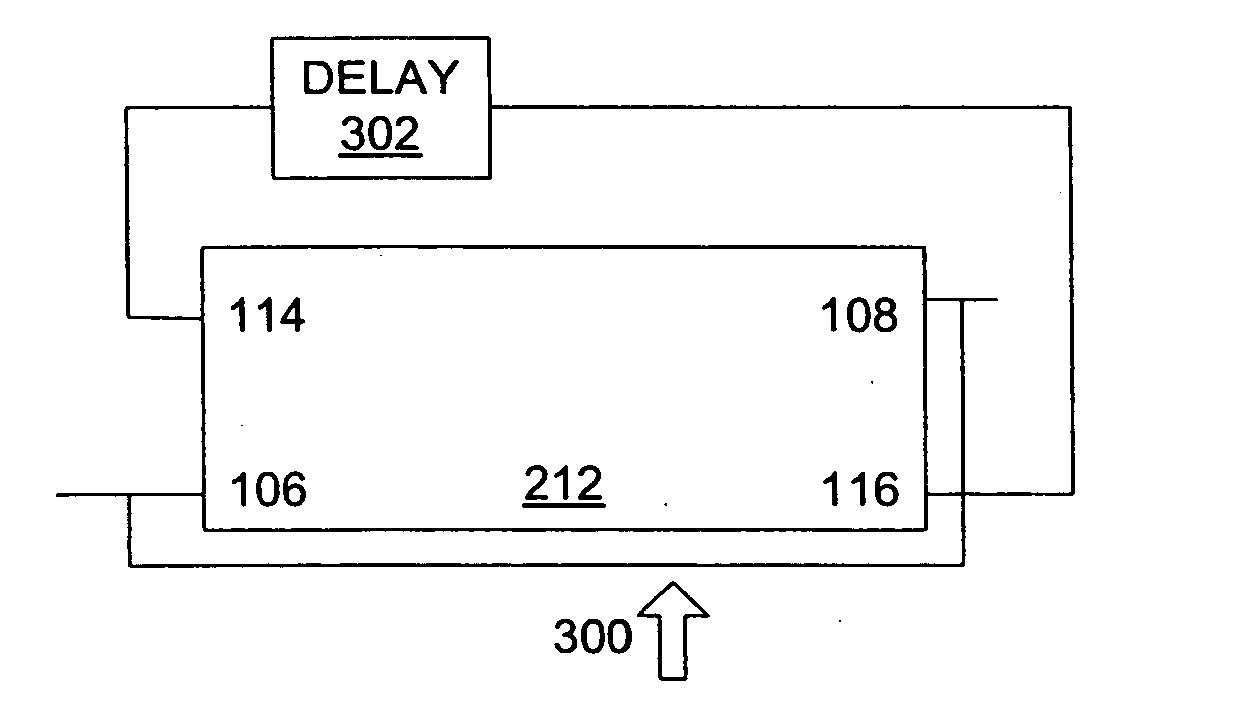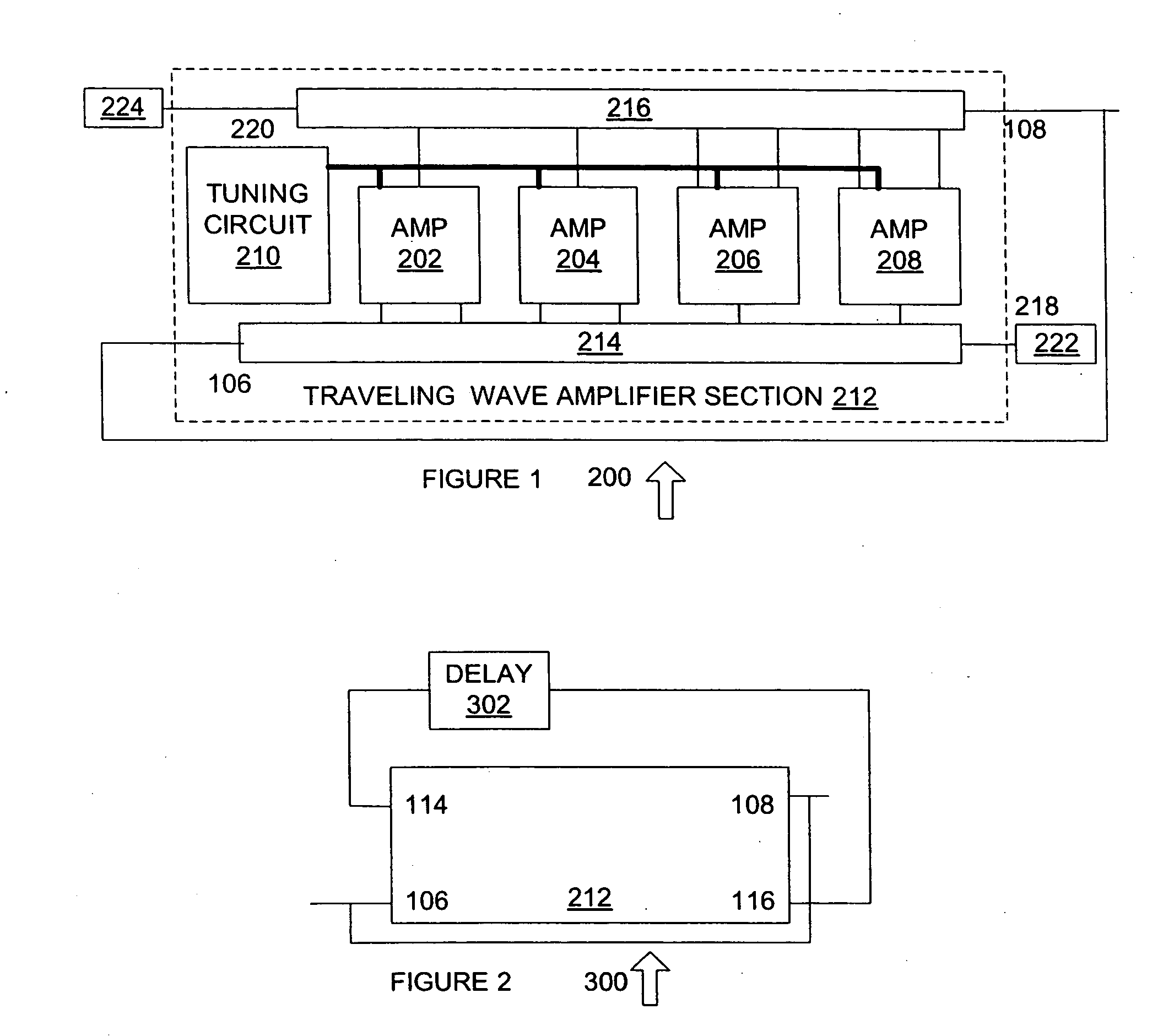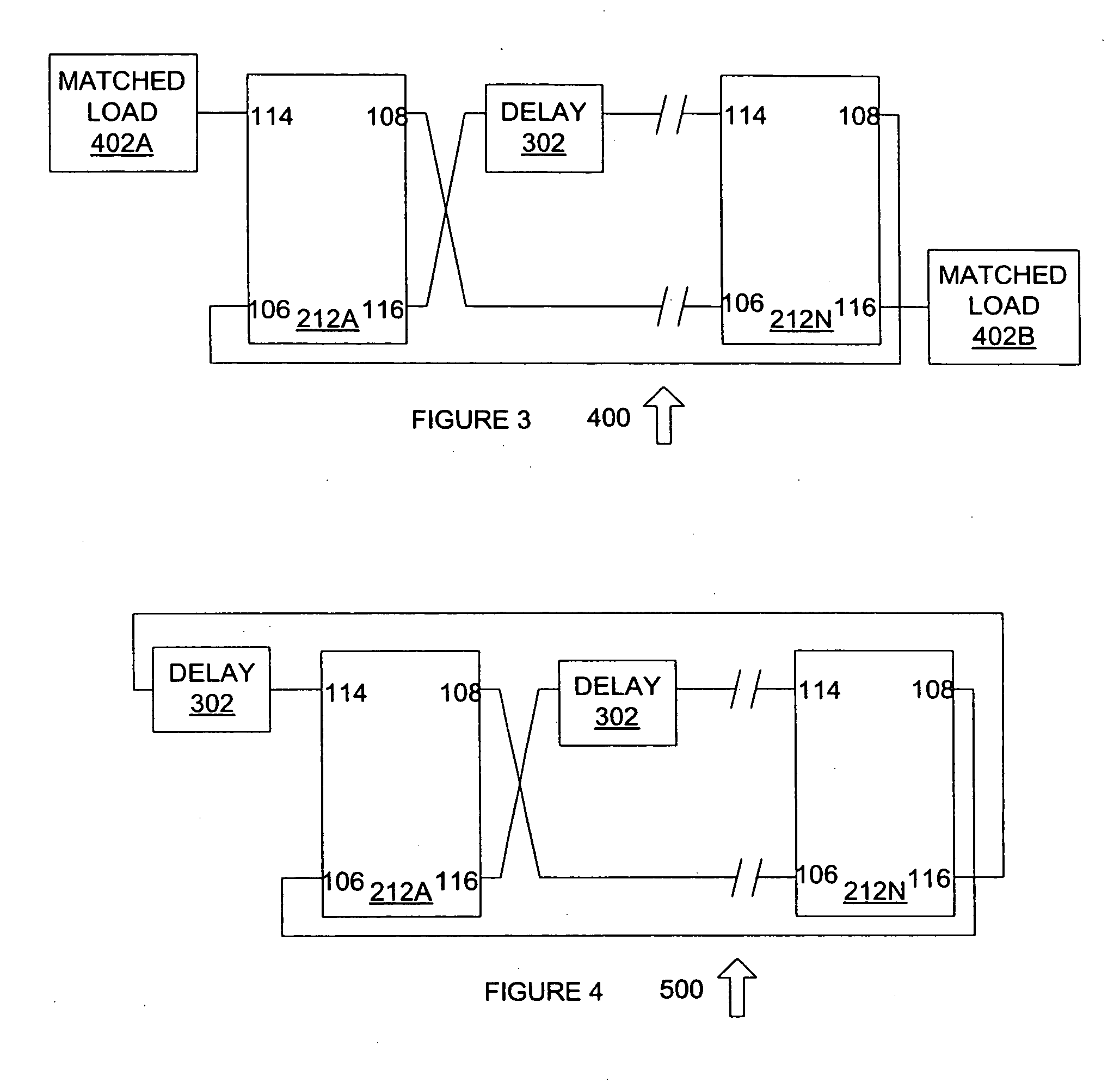Distributed oscillator architectures
a technology of distributed oscillators and architectures, applied in the field of oscillators, can solve the problems of insufficient high frequency oscillator in many respects, difficult to achieve a wide tuning range and good phase noise performance, and further exacerbate the problem of high frequency oscillator problems. achieve the effect of better performan
- Summary
- Abstract
- Description
- Claims
- Application Information
AI Technical Summary
Benefits of technology
Problems solved by technology
Method used
Image
Examples
Embodiment Construction
[0015] The invention summarized above and defined by the enumerated claims may be better understood by referring to the following detailed description, which should be read in conjunction with the accompanying drawings. This detailed description of particular preferred and exemplary embodiments, set out below to enable one to build and use particular implementations of the invention, is not intended to limit the enumerated claims, but to serve only as particular examples thereof. The particular examples set out below are the preferred specific implementations of integrated distributed oscillators. Prior to describing the invention, some background on the operation of integrated distributed oscillators will be illustrative.
II. Conventional Distributed Oscillators
[0016]FIG. 1 is a diagram of a conventional distributed oscillator 200, which includes traveling-wave amplifier section (TWAS) 212. TWAS 212 is adapted to be used in conjunction with FIGS. 2 through 6A, as described furthe...
PUM
 Login to View More
Login to View More Abstract
Description
Claims
Application Information
 Login to View More
Login to View More - R&D
- Intellectual Property
- Life Sciences
- Materials
- Tech Scout
- Unparalleled Data Quality
- Higher Quality Content
- 60% Fewer Hallucinations
Browse by: Latest US Patents, China's latest patents, Technical Efficacy Thesaurus, Application Domain, Technology Topic, Popular Technical Reports.
© 2025 PatSnap. All rights reserved.Legal|Privacy policy|Modern Slavery Act Transparency Statement|Sitemap|About US| Contact US: help@patsnap.com



